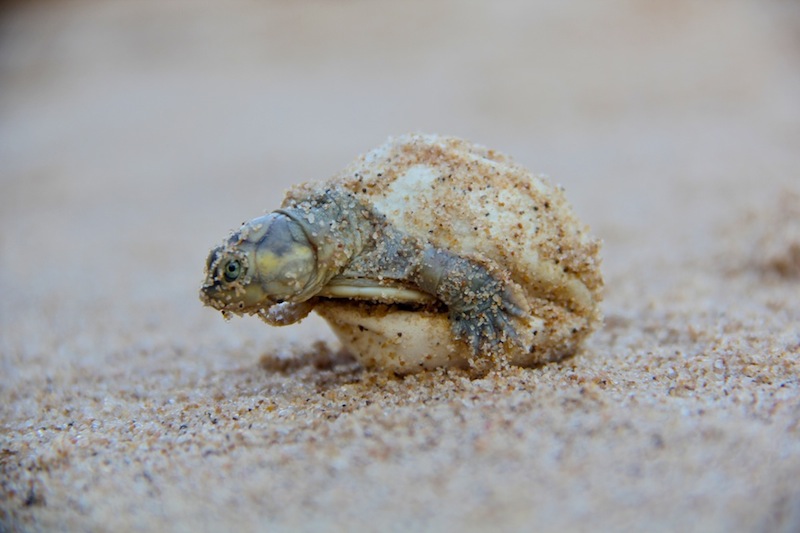Baby River Turtles Hatch by the Thousands in Brazil

More than 200,000 baby turtles recently crawled out of their shells and swarmed sandy riverbanks in the interior of Brazil.
The mass hatching is an annual event for Great South American river turtles. Every time the dry season rolls around in the the Purus River basin in western Brazil, thousands of newborns emerge in one of the largest known mass hatchings for the species (Podocnemis expansa), according to the Wildlife Conservation Society.
Scientists with WCS and the Chico Mendes Institute for Biodiversity Conservation were on hand for the recent mass hatching in November 2013 in Brazil's Abufari Biological Reserve. The team counted about 210,000 baby river turtles in total and rounded up 15,000 of those young creatures for a "mark and recapture" program. [See photos of the baby turtles]
By keeping tabs on marked turtles, scientists can estimate their population, monitor their travel and track their survival rates in the years to come.
"The marked turtles will hopefully provide important data that will help inform conservation plans to safeguard this species from exploitation," Camila Ferrara, aquatic turtle specialist for the WCS Brazil Program, said in a statement. The turtles, which are hunted for their meat and eggs, could potentially be threatened by overconsumption.
Only a small percentage of the baby turtles will live to reach adulthood, according to WCS. Having so many offspring is part of an evolutionary strategy to overwhelm predators; it's impossible for all members of such a huge population to be eaten.
The ones that survive will grow up to be nearly 3 feet (80 centimeters) in length. The Giant South American river turtle is the biggest member of the side-necked turtle family.
Get the world’s most fascinating discoveries delivered straight to your inbox.
Follow Megan Gannon on Twitter and Google+. Follow us @livescience, Facebook & Google+. Original article on Live Science.



